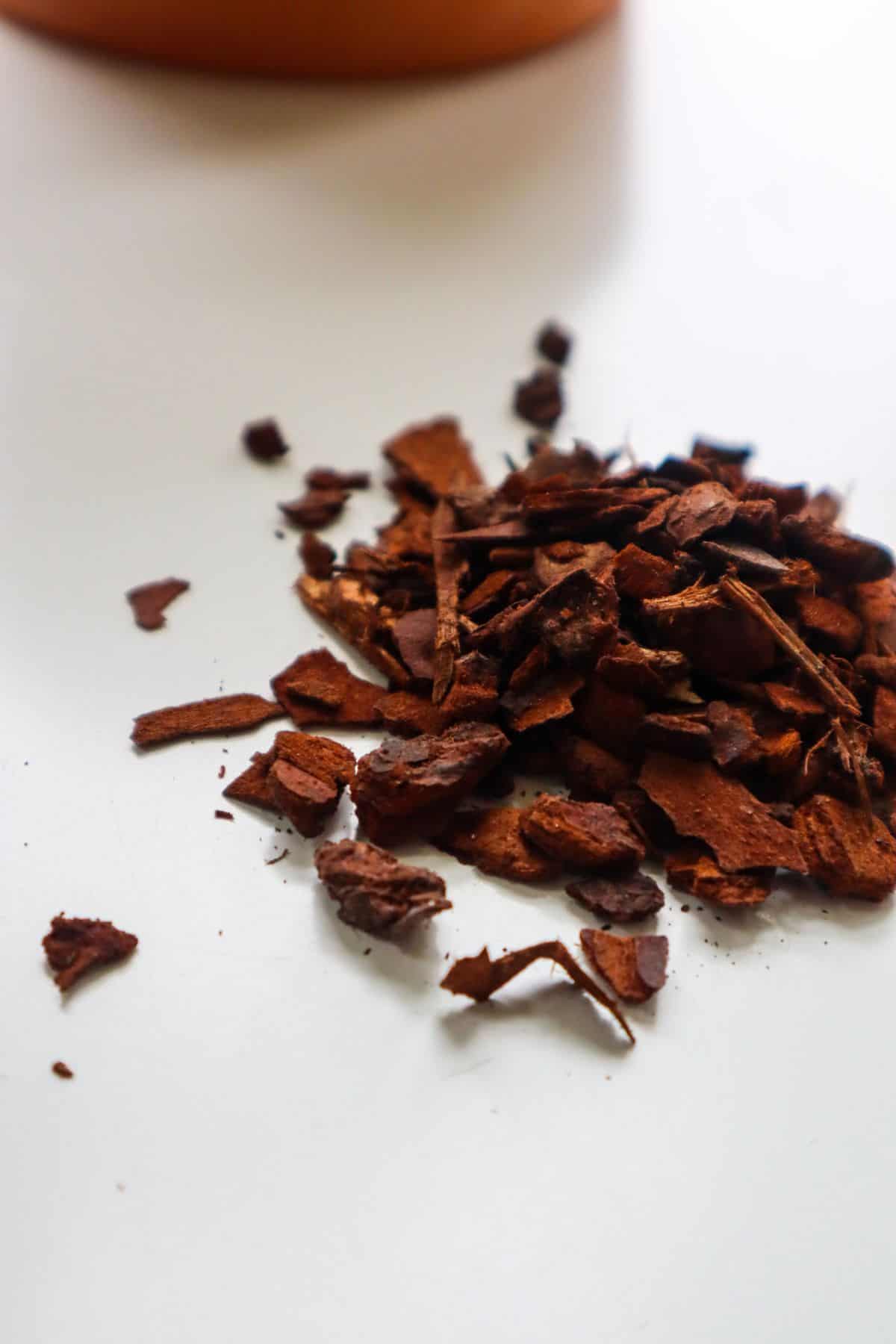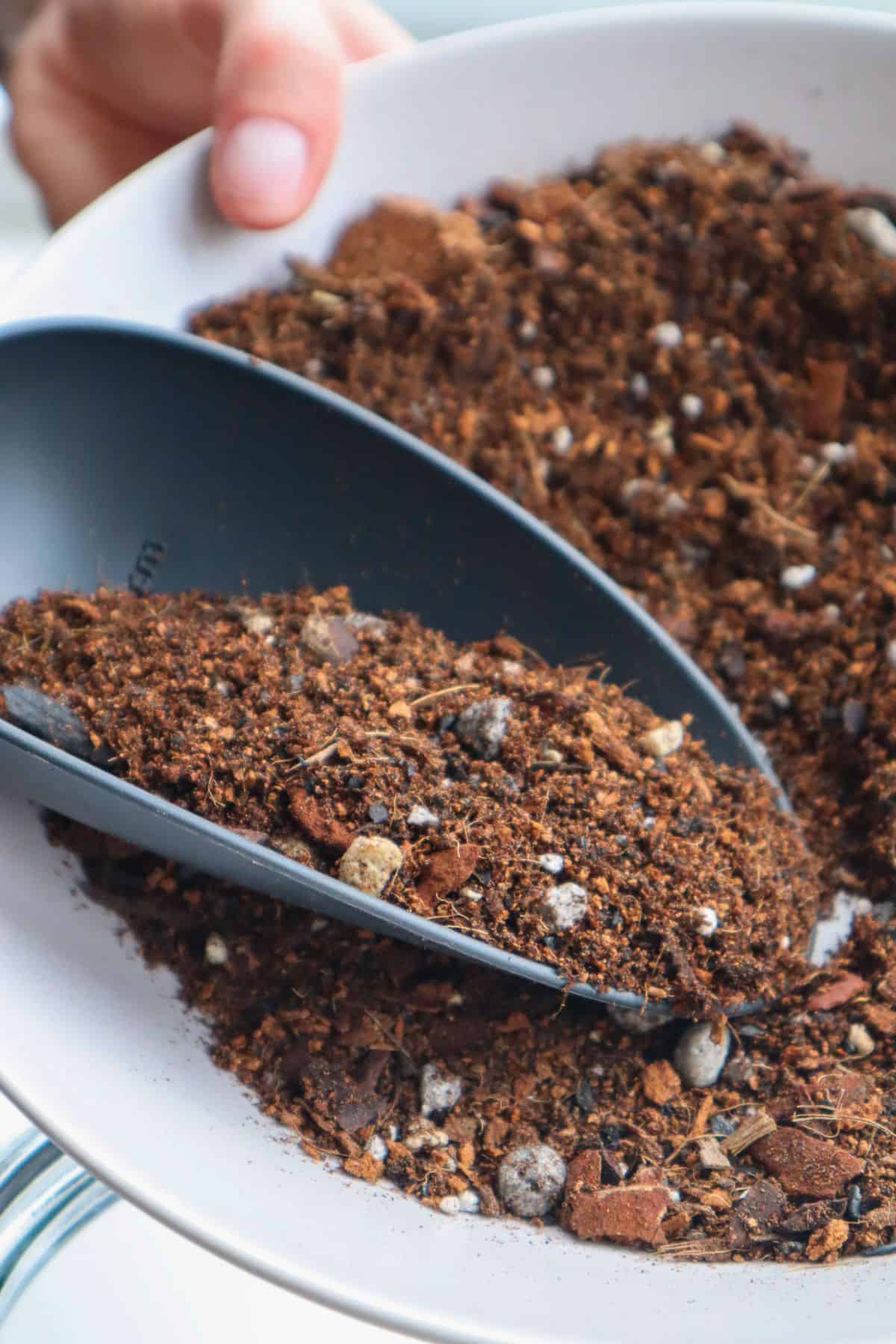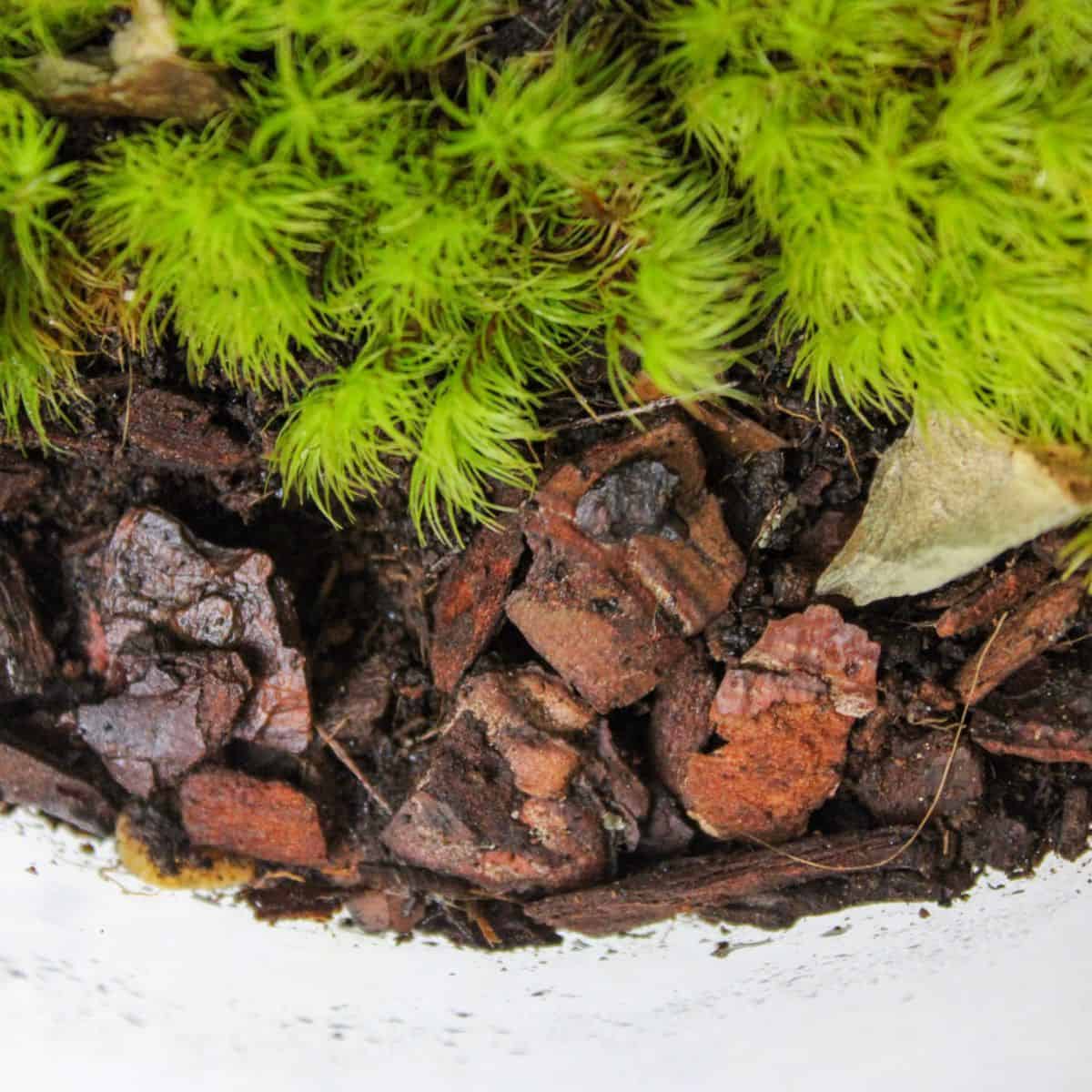Orchid bark is a classic horticultural material with a ton of versatility.
Move over orchids, the (many) benefits of orchid bark are now available to tropical plants and terrarium projects of all kinds too.
With a chunky and fibrous composition, this all-natural substrate element can add a lot of structure and aeration to a mix. And for the right epiphytic plants, it can even be used on its own!
In this guide, we’ll cover how to use orchid bark to its fullest and which type to choose for your given project.
Ready em-bark on this adventure? Let’s go.

Terrarium Tribe is reader-supported. When you purchase through links on our site, we may earn an affiliate commission (at no further cost to you). 💜
What is Orchid Bark? (+ Fir Bark vs. Hardwoods)
First things first, let’s get the awkward naming out of the way.
Orchid bark is bark for orchids, not bark from orchids.
Turns out, orchids don’t have bark… that’s still very much a tree thing. It’s actually sourced from a variety of coniferous trees, but the most common is fir bark.
Fir bark sees the most use because it typically breaks down more slowly than other kinds of tree bark (such as hardwoods). Occasionally you’ll also see the likes of pine bark, redwood bark, and sometimes hemlock bark.

So, as you can see, the names are all kind of interchangeable.
You’ll even see it labeled simply as “terrarium bark” or “reptile bark,” too – which is somewhat unhelpful.
All that to say, it’s not always entirely clear what you’re getting at first glance. And orchid bark comes in a variety of ways and sizes, from chips and shavings all the way to mulches and dust.
So, it’s important to get the right kind of orchid bark for your use case (more on that later).
Orchid Bark Substrate 101
Orchid bark can make an excellent standalone potting medium (for orchids and epiphytes), but it really shines as part of a tropical substrate mix.
- It’s a natural material, so it looks and feels authentic in a terrarium environment and in a pot.
- The chunky nature of the bark makes it fantastic at aerating soil, resisting compaction, and providing drainage in a substrate mix.
- Increases water retention to a degree, which in turn helps to boost ambient humidity,
- It’s sustainably sourced, which is always nice. Plus, it smells good!
No wonder it’s been a mainstay in the classic ABG Mix recipe for so many years.
Orchid bark does contain some nutrients in the form of trace minerals (which can help with plant growth), but it’s by no means a primary means of fertilizing. That’s why I always add earthworm castings to my mixes for an organic fertilizing agent.
All in all, orchid bark is a super reliable addition to tropical substrates of all kinds.

When it comes to indoor plants, even just adding orchid bark to a potting mix can seriously improve its effectiveness and longevity (though that’s still not good enough for terrariums).
Next up, the different types of orchid bark and where to use them.
Types of Orchid Wood Chips
For substrates, the primary form of orchid bark is going to come in the form of chips.
The size of which is going to be called the “grade.”
What you choose for your project will be largely determined by your specific use case. In terms of whether you’re using it as part of a mix or you’re using it on its own.
Here, we’re going to deep-dive into the different types of orchid bark so you know which is best for you.
1. Fine Grade Orchid Bark
I really like the fine-grade orchid bark, especially for terrarium mixes.
The chunks are still large enough to provide all of their structural benefits but small enough that you can still comfortably fit them into the smallest of containers.

Honestly, if you’re making up a custom mix and need some orchid bark to make up a portion of it – this is your best bet.
The smaller size tends to be better for younger and smaller plants in general, as it’s easier to root in.
👉 Shop Fine Orchid Bark on Etsy.
2. Medium Grade & Coarse Orchid Bark
As you might imagine, these are just larger chunks.
But the bigger the bark, the faster the substrate will drain and dry – so it does matter.
Some plants grow well in a super chunky, well-aerated mix (mostly epiphytes like Bromeliads and Dischidia). Or, particularly large tropical plants like Aroids can fare well in chunky orchid mixes, too.
Though the largest of chunks tends to be best when you don’t want orchid bark to be just part of a mix, but rather you need it to be the mix.
👉 Shop Coarse-Grade Orchid Bark.
3. Orchid Mix / Orchid Potting Mix
As with all forms of potting mix, orchid potting mix is quite literally a mixed bag.
Often, the bark itself is blended with other fibrous materials like coco fibers, seramis (a kind of clay), and sometimes perlite.
They can still be great for terrariums, but it’s always important to check the label!
Wrapping Up
Orchid bark has long been a go-to addition to all of my substrate mixes.
It brings all the right benefits without sacrificing aesthetics or sustainability.
What’s your experience with using orchid bark in terrariums? Or better yet, how about an actual orchid terrarium (orchidarium)?
Let us know in the comments.

This is a terrific article. Thanks so much. I found this blog from the article in the NYT. So far both blog posts I read were great.
Great and helpful article.
Thank you; it was really helpful.